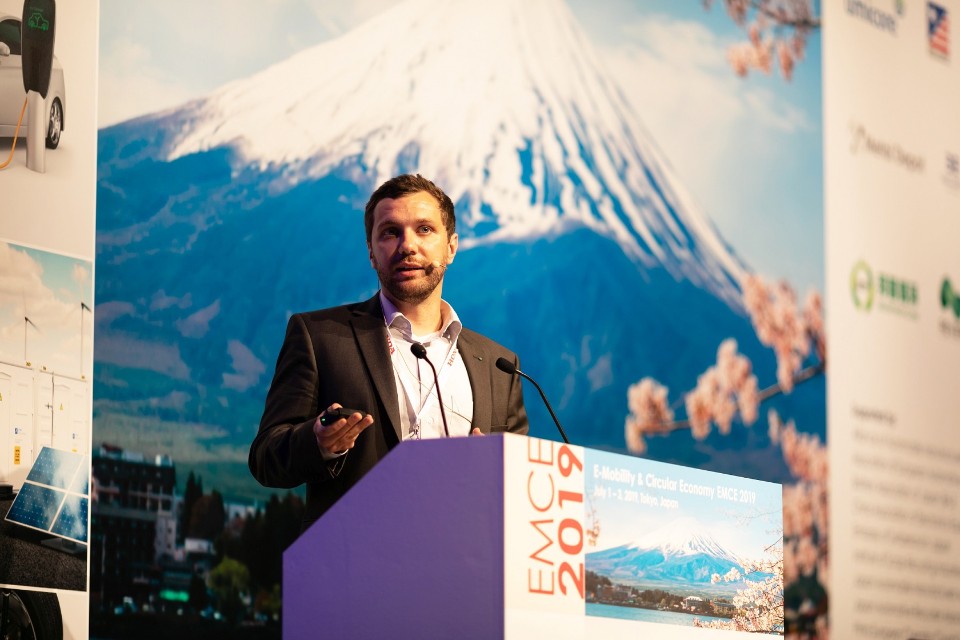EMCE 2019, Tokyo
E-Mobility meets Circular Economy
From July 1-3, 2019, experts from around the world met at the E-Mobility & Circular Economy (EMCE 2019) Conference in Tokyo to explore how electromobility can contribute to a sustainable and responsible approach to our environment.

During the three-day conference new mobility concepts, challenges and opportunities of urban mobility of the future as well as sustainable and environmentally friendly solutions were discussed.
An important aspect of e-mobility is the sustainability of high-performance batteries, which are designed to supply vehicles with energy over long distances. Currently, the recycling and recirculation of the valuable raw materials contained in the batteries is still a challenge, especially with regard to the cost-effectiveness of the process. The Fraunhofer Research Institution for Materials Recycling and Resource Strategies IWKS presented its solutions for environmentally friendly recycling of batteries.
Daniel Horn, scientist in the Energy Materials Department, showed in his lecture that the active material contained in batteries is an important source of raw materials. Its recovery can thus make an important contribution to the protection of primary raw materials.
At the Fraunhofer IWKS, researchers are working on new ways of battery recycling and are using a novel process known as electrohydraulic fragmentation. This involves exposing old batteries to a shock wave in a reactor filled with water. The shock waves are generated by applying a high voltage to the water and they stress the material at its limits. The various materials can then be efficiently separated from each other by simple sorting processes. This results in different fractions of plastic, metal and active material. The most valuable of the recovered fractions is the active material, e.g. consisting of nickel-cobalt manganese oxide. The aim is to reintroduce the active material into the material flow for the production of new batteries.
"So far, we have been able to recover up to 90 percent of the starting material for the battery cells - with a significantly lower CO2 footprint than with other processes," explained Daniel Horn.
Please find more information on battery recycling at Fraunhofer IWKS here.
 Fraunhofer Materials
Fraunhofer Materials